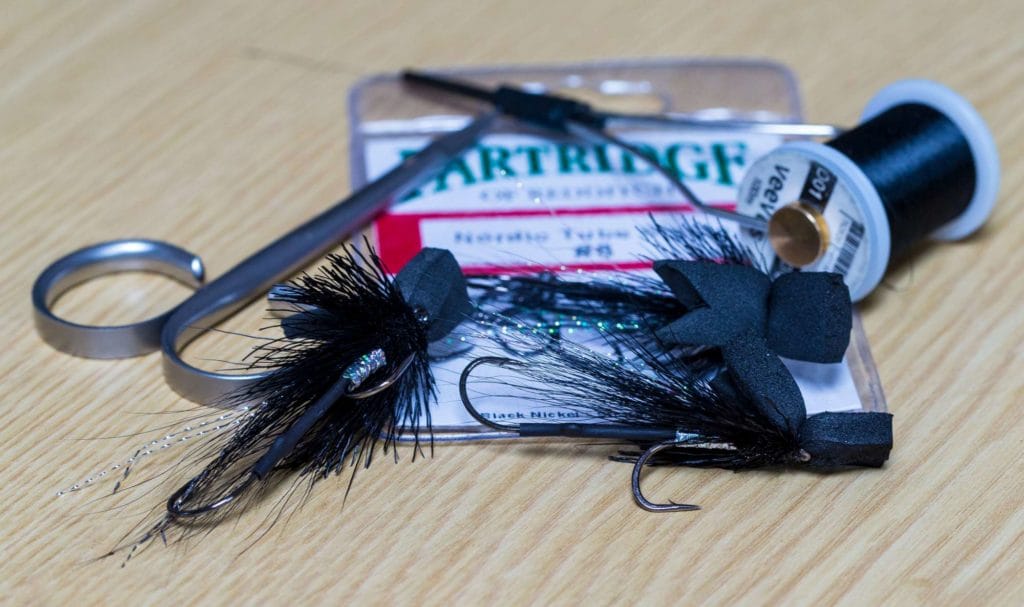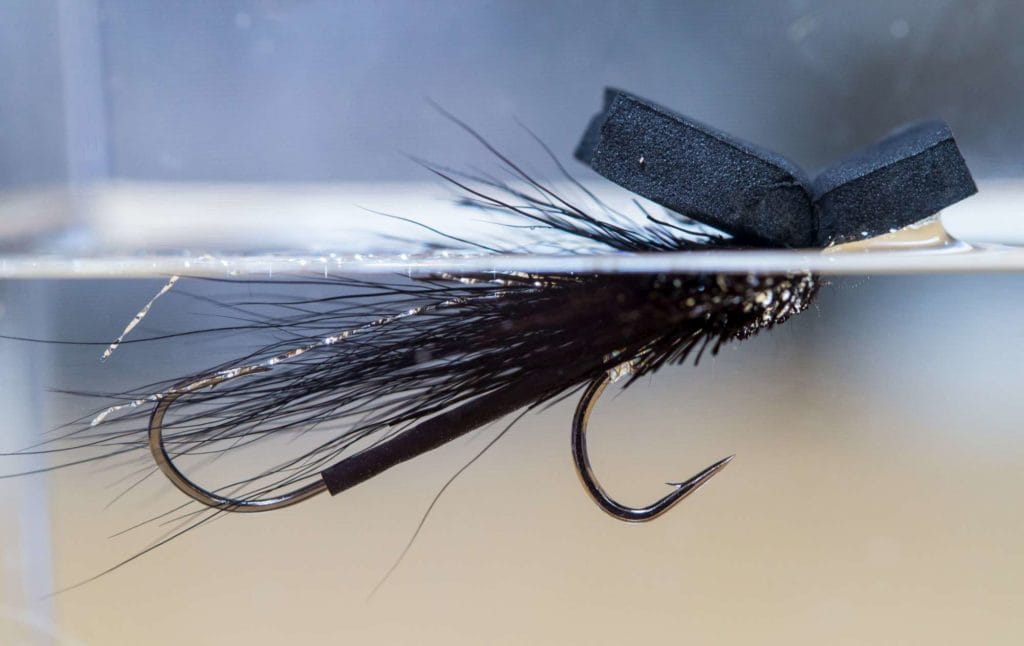Sea trout surface lure fishing – striking the perfect balance (by Steffan Jones)
When it comes to sea trout flies the ones I tend to adapt and experiment with the most are undoubtedly surface lures. The reason why is simple; they are the hardest ones to get right, but, more importantly, the ones that need to be right in order to maximise their effectiveness and hooking efficiency.
Surface lures are deadly. If you enjoy night-time fishing for sea trout then chances are you already have a handful within your arsenal. If you do not, then that is something you really need to rectify as soon as possible as they can often get a reaction or save a blank night when nothing else provokes a reaction. They can work throughout the year and are worth trying no matter what the conditions. However, as a rule, they do work better when the water has warmed up and also tend to work better later in the season.
Without getting too technical, the most important attribute of a surface lure beyond creating a wake is to fish ‘in’ rather than ‘on’ the surface. This may sound simple, but it is actually difficult to achieve this critical balance. However, achieving it can mean the difference between a reaction to the fly and a secure hook-up. For those looking to cover the science of the surface lure more in-depth then please do refer to the surface lure chapter within my book, which was released in February 2018 (Sea Trout Tips, Tricks & Tribulations).
Material choice is paramount. Different properties will achieve different results. Too buoyant and the sea trout will push the surface lure away when attempting to intercept, too heavy and the fly will sink, negating its purpose and application. For me, to achieve this perfect balance you need to use a combination of materials, some being more buoyant than others, securing the equilibrium.
Hook placement is also worthy of careful consideration. Ideally the hook/s ride under the water’s surface, which helps anchor the overall fly in the surface film whilst also making them easy for the sea trout to intercept. Also on the hook front; have confidence in single hooks. I firmly believe they give the best hook-hold of all, but also make for easier release of the fish with minimal damage – they are too precious to be caught just once, especially given their multi-spawning nature.
After much trial and error I believe the following pattern is as close to perfect as I will achieve. It rides well in the surface, the hooks are placed strategically from a hooking perspective and the overall dressing still has a nice thick, fussy profile but remains relatively aerodynamic as there is minimal bulk. The use of shrink tubing for the mount ensures the best chance of landing the fish once hooked, as it moves with the fish rather than hinging, yet is not too malleable that it doubles back on itself.
Deer hair is used partly for its buoyancy, but more for its messy profile and silhouette. It is cut flat on the top and bottom, retaining the length on both sides – the part that will cast the silhouette. Clipping the deer hair closely on the bottom helps the fly ride low in the surface but also allows clear access to the hook point for the fish. The main buoyancy comes from black plastazote foam. However, this buoyancy is stacked high on the fly, keeping the hooks and main dressing low; either in or below the surface film. This is perfect, as you get the main wake from the deer hair, but the major buoyancy from the foam – best of both worlds. Also, the positioning of the foam accentuates the fishing angle, forcing the body and tail of the fly to break the surface film. This, again, helps create a perfect presentation; easily intercepted and engulfed by the sea trout.
Dress them in different lengths. Some nights a smaller surface lure will be required and will be taken far more confidently than a larger one, which may only be splashed at. If the water is cooler or if there is a lot of mist on the water where very little seems to be provoking a reaction then much larger surface lures need to be deployed for a reaction – an overall dressing of three inches would certainly not be excessive.
TYING INGREDIENTS
Front hook: Wide gape, mid shank – Partridge Attitude Extra is a good option; size 4
Trailing hook: Partridge Nordic Tube Single; size 6-8
Link: 30lb+ braid with 2.4mm black shrink tubing over – make sure not to damage the braid when heating the shrink tubing.
Body: Holographic silver flat braid
Wing 1: Black bucktail
Wing 2: Pearl crystal hair
Head 1: Black deer hair
Head 2: 4-6mm black plastazote foam sheet
As an optional extra; you may place a dab of superglue on top of the black foam then dip this part into glow-in-the-dark powder, which is charged by torchlight. Place this on the back section rather than the front lip. You will be able to see the surface lure track across the pool, which is very exciting. You see the glow, but the fish just see the silhouette.
Sea trout surface lure fishing – striking the perfect balance
Steffan Jones has fished for sea trout all over the world, but the Teifi and Towy Rivers in West-Wales are his home waters and where he honed his skills. These rivers became his laboratories on which to test theories and fine-tune fly patterns. He has guided people onto sea trout for over twenty years and recently released a book on sea trout fishing – for more information please contact [email protected]


